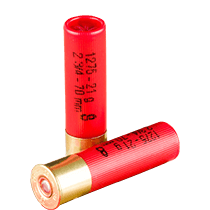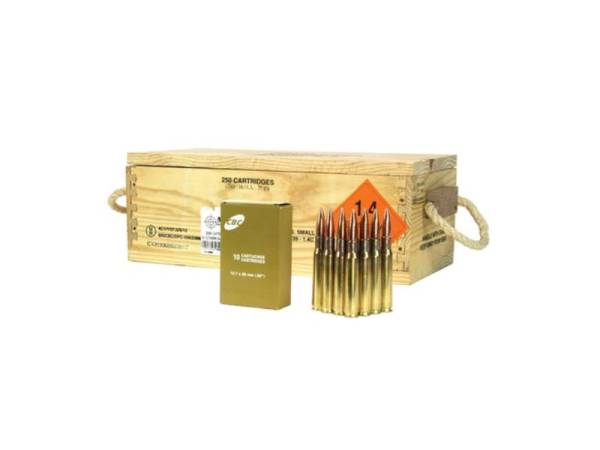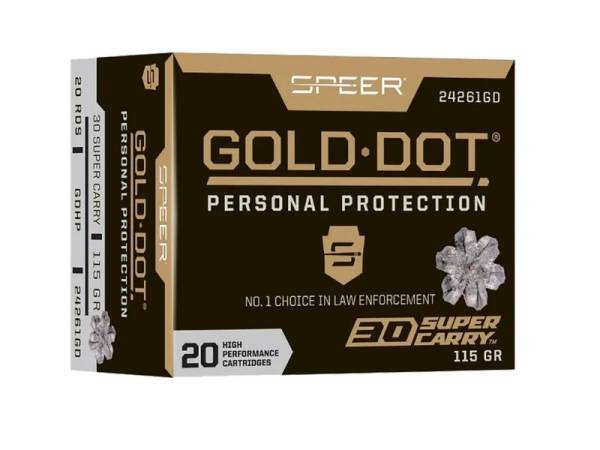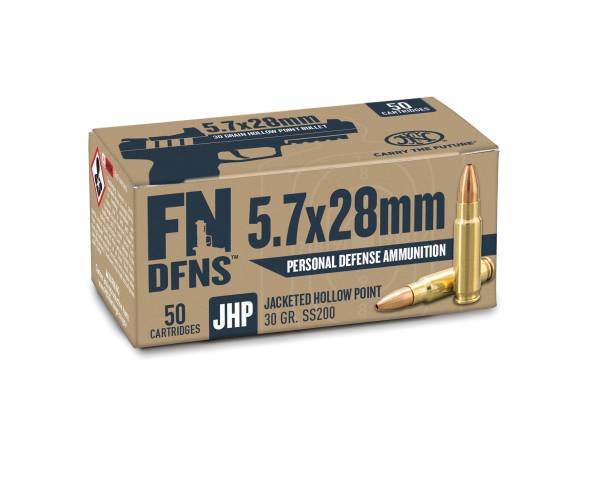Description
Considered by some as a gauge only to be used by “expert” shooters, the 28 gauge can be exceptionally enjoyable to shoot – due to its light recoil and use in lightweight guns. It also still performs admirably for hunting or competition. The 28 gauge shotgun shell, while over a hundred years old, is the up-and-coming round in the shotgun world. It’s used in both skeet shooting and upland bird hunting, and provides a valuable alternative to the traditional in both.
Although not as popular as other small bore shotgun shells, the 28 gauge is capable, effective, and easy to shoot. It continues to grow in popularity and more shooters find a use for it year after year, primarily due to the instinctual way firearms chambered for the round fire.
The modern version of the ammunition features a 2.75-inch shell, most often plastic, but sometimes shooters can find it still in a paper hull. Twenty-eight gauge rounds are filled with sizes of 6 shot, 7.5 shot, 8 shot, or 9 shot. The shell averages a velocity of 1,295 feet per second (fps).
With a small, .550-inch diameter bore, this ammo is often compared to .410 bore, but is more effective. Some even describe the round as handling like a .410, but performing like a 20 gauge. Understanding the Shotgun Shell
A shotgun shell consists of a plastic or paper hull that fits on top of a brass head that houses the primer. On top of the primer is smokeless powder, which is capped with a wad. The wad is either paper or plastic and creates a barrier between the powder and the shot shell. Some ammunition also house a wad to hold the shot in formation as it exits the end of the barrel.
Shot are the projectiles that get fired from the shotgun. While slugs can be used, most 28 gauge shells contain pellets made from lead, steel, brass, or plastic. In a 28 gauge cartridge, there is always a three-quarter ounce of shots. The number of pellets is determined by the shot size – the lower the number of the shot size indicates a larger size pellet.
Shooters can find 28 gauge ammo for sale in the sizes below. If filled with lead shot, the following standards apply with 28 gauge shotgun shells:
Shot size No. 6 = 169 pellets
Shot size No. 7.5 = 262 pellets
Shot size No. 8 = 307 pellets
Shot size No. 9 = 439 pellets
Shotgun shells are measured in gauge, which is an archaic system that dates back to cannons. The gauge is a measure of the gun’s barrel, measuring the size of a pure lead ball that would fill the entire diameter of the barrel. However many of these balls it takes to weigh one pound is the gauge.
It’s best understood in an example. The lead ball that fits perfectly into the end of a 16 gauge shotgun is 1/16th of a pound. The ball that fits into a 12 gauge is 1/12th of a pound.
In the 28 gauge, the lead ball that would fit into the end of the barrel is 1/28th of a pound. In other words, it would take 28 of those balls to create one pound.
In modern measurements, a 28 gauge shotgun has a barrel bore of .550 inch.
Development of the 28 Gauge Shotgun Shell
History doesn’t give shooters a definite answer as to when the first 28 gauge shotgun shell was fired, but as early as 1855, smooth bore muzzleloaders were used with the same .550-inch bore. While muzzleloader shooters often used solid bullets, they could just as easily use, and many did, some sort of shot to have multiple projectiles fired at once.
In 1903, the Parker Brothers Gun Company introduced the first 28 gauge shotgun, and others soon followed. Remington started with a 28 gauge in its popular single shot Model 1893 Rider No. 9. In 1937, Winchester followed suit with a version of its Model 12 pump action chambered for the 28 gauge.
The original 28 gauge shell measured at 2.5 inches, and for a period of time, fluctuated between sizes. Eventually, as plastic took over the shotgun shell market in the 1960s, the standard was set at 2.75 inches, which is where it remains today.
Uses for the 28 Gauge Shotgun
Although the 28 gauge isn’t found in every hunter’s gun cabinet, it’s actually more useful than many give it credit for. The round is most popular among clay pigeon shooters, primarily skeet, who use 28 gauge shotguns in the small bore class. It’s really these shooters who’ve kept the round alive for the last 100-plus years, giving it a platform in which to perform and demonstrate its abilities.
The 28 gauge is also popular with upland hunters. Upland hunting refers to pursuing small- to medium-size game birds that tend to nest and roost on the ground, under heavy cover. Because these birds live in such dense coverage, hunters often use dogs to flush the birds from the field, giving them the ability to shoot. Upland birds include:
Quail
Pheasant
Grouse
Woodcock
Prairie chicken
Chukar
Grey partridge
Beyond upland birds, some shooters may also harvest doves, mallards, and Canadian geese with the 28 gauge shotgun shell.
Benefits of Shooting a 28 Gauge Shotgun Shell
The 28 gauge shotgun shell and firearms are popular among skeet shooters and upland hunters for various reasons. First, when compared to larger shotguns, the recoil of the 28 gauge is significantly less. And when compared to .410 shotgun shells, the 28 gauge is more accurate and often handles better.
The .28 gauge cartridge is much smaller than a 12 gauge, and when it comes to recoil, it shows. The 28 gauge’s 12 pounds of force is next to nothing compared to the 12 gauge’s – which kicks like a mule at 54 pounds. The light recoil makes 28 gauge shotguns easy to handle and quick to refire, especially for novice shooters, those of small stature, and seniors.
What’s more, the smaller shell creates less bang, making it easier on the shooter and others nearby. Although it’s not as loud, it doesn’t necessarily weaken the round, as gauge doesn’t impact power, just the density of the shot pattern. And speaking of patterns, 28 gauge shells often look nearly identical to 20 gauge.
Another benefit to the 28 gauge round is that many of the shotguns chambered for the shell are small and lightweight. Modern 28 gauge shotguns typically weigh between 5.5 to 6 pounds. This low weight makes trekking through brush and forests easier and creates less fatigue in the shooter.
Because of its light weight, sports shooters and hunters often comment on how 28 gauge shotguns feel like an extension of the body. The guns are not only easy to shoot, but they also naturally find their target and become an instinctive fire for hunters and skeet shooters alike.
Although it’s not the biggest upland bird gun, and there are some that say it’s too small, those who use the 28 gauge have been known to say that they take more birds with less shots than when they opt for a larger gauge.
For skeet shooters, the 28 gauge qualifies in the small bore category. The round is accurate and consistent and, as mentioned, shotguns chambered to 28 gauge ammo shoot easy and can save a shooter’s shoulder after a day of training or competition.
Cons of Shooting a 28 Gauge Shotgun Shell
Just because the 28 gauge has plenty of perks doesn’t mean the round has no downfalls. There are various challenges with the 28 gauge and a significant reduction in payload is the most obvious.
As previously mentioned, 28 gauge shells house only three-quarters of an ounce of shot. To offer a comparison, a 28 gauge shell loaded in No. 8 shot size holds 307 pellets, about 100 fewer than what’s loaded into a 12 gauge shell with the same shot size.
Shooters have a limited range with 28 gauge shotgun shells, especially if hunting waterfowl (which may be restricted due to ammo size or pellet material). Head shots are always best, especially with the tight pattern of the 28 gauge, and body shots should only be attempted within a 25 yard range.
Another challenge is obtaining a 28 gauge shotgun. Browning, Ruger and Weatherby have manufactured over-under style 28 gauge shotguns, but the volume they produce doesn’t even approach the number of guns that are made for 12 gauge or 20 gauge.
Ammunition, although easier to come by than the shotguns themselves, can also be difficult to attain. And, although it’s getting better, cheap 28 gauge shells are difficult to find. Because they’re not a popular round, the price of a box of 28 gauge ammo can be more expensive than other shotguns shells, even the bulkier 12 gauge. To get the best deal, shooters often purchase bulk 28 gauge ammo.
Issues also include limited variation in these shells, significantly less than the more popular rounds. That means some shooters may have trouble finding the specifics they need, such as lead-free shot, which could limit how and where the ammunition can be used.
What Shot Size for 28 Gauge Shotgun Is Best?
While shot size for 28 gauge ammo ranges between No. 6 and No. 9, the uses of the ammo are divided. Sport and skeet shooters opt for a smaller pellet and No. 9 is, by far, the most popular shot size on the training range.
No. 6 shot loads are primarily used by upland bird hunters. And because more and more of these hunters are turning to the 28 gauge, more manufacturers are making the ammunition.
Although a variety of ammunition manufacturers make 28 gauge shotguns shells, including Winchester, Remington, Federal, and Estate, it’s not always easy to find the exact configurations a shooter wants. Because of these limitations, many who regularly shoot a 28 gauge shotgun reload their own ammunition. This allows the shooter to adjust the round to their specific needs and some may even create their own wildcat rounds.
The Best 28 Gauge Shotguns
For shooters looking for a 28 gauge shotgun, there are a range of options, although not near as many as other more popular gauges. Shooters can find this gauge in pump action shotguns, semi-automatics, over-unders, and side-by-side.
Some of the most popular include:
Ruger Red Label: An over-under shotgun, this gun was chambered in 28 gauge in 1994, after Ruger scaled down the receiver allowing for the smaller barrel. Although it’s no longer manufactured, shooters can still find the Ruger Red Labels at used gun stores across the country.
Browning Citori Lightning Feather Combo: For shooters who want fast action in a combo, nothing does it better than this Browning. With both a 20 gauge and 28 gauge barrel, shooters get exactly what they need when upland bird hunting.
Browning BPS: With a reputation for dependability and durability, the Browning BPS in 28 gauge offers an affordable alternative to the feather combo. It’s been coined the finest pump-action shotgun in the world and comes with a magazine that holds four rounds.
Remington 870: Perhaps one of the most trusted pump action shotguns, over 11 million Remington 870 firearms have been sold since its conception in 1950. The firearm is strong, durable and a favorite among those who’ve had the pleasure of shooting it.
Fausti DEA: This classic side-by-side demonstrates distinguished tastes in firearms, but comes with modern-grade workmanship. The shotgun is light, weighing in at five pounds, making it easy to handle and carry.
Franchi Instinct L: This over-under shotgun acts as an extension of the body, easily taking down birds with a natural, easy-to-handle shot. It quickly swings onto the shoulder and weighs in at six pounds.
Twenty-eight gauge shotguns and ammo can be hard to find, but the cartridge is the best tool for the job in certain situations, and truly is worth the investment of time and money. The 28 gauge shot shell continues to be a well-regarded and appreciated gauge by hunters and sport shooters alike.
FAQ
Which is bigger 12 gauge, 20 gauge, 28 gauge, or .410 ammo?
When comparing different sized shotgun shells, the 12 gauge is the biggest, followed by the 16 gauge, then the 20 gauge, the 28 gauge, and lastly, the .410 bore. There is a 10 gauge shotgun cartridge, although it is not as popular as the 12 gauge.
Is 28 gauge ammo common?
Although not as common as the 12 gauge, the 28 gauge shotgun cartridge is still a popular round among some demographics. It’s often used by skeet shooters in the small bore class, who appreciate it’s low recoil and easy manageability. It’s also used by upland hunters for hunting quail, pheasant, and grouse, among other ground-dwelling game birds.
How many pellets are in 28 gauge shotgun shells?
The number of pellets found in 28 gauge shotgun shells depends on the shot size the shooter opts for. The 28 gauge always holds three-quarter ounce of shot, regardless of the size of pellets. In 28 gauge, shot size No. 6 has 169 pellets. Shot size No. 7.5 has 262. Shot size No. 8 features 307 pellets and shot size No. 9 has 439. Slugs have one projectile.
What can you use a 28 gauge shotgun for?
The .28 gauge shotgun shell is most popular among skeet shooters in the small bore class. These shooters like the light recoil and easy manageability of the .28 gauge, which can still hit and explore clay pigeons. It’s also a popular round among upland game bird hunters and those who harvest geese, mallards, and dove.





